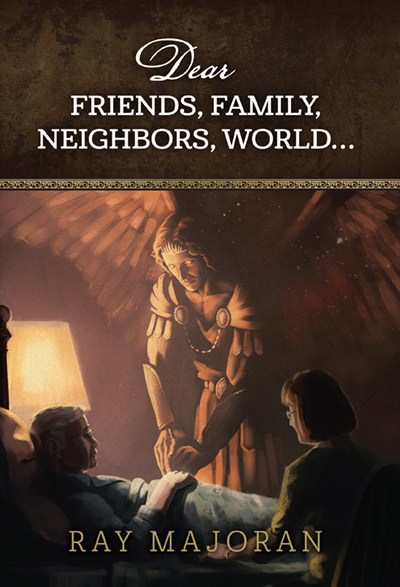James Clerk Maxwell was a Scottish physicist who predicted electromagnetic waves and is known for providing the basic equations of electricity. He asserted that two different kinds of color exist, depending on whether they were perceived by an instrument, or by the human eye. The two kinds of color are:
Both are correct. Like two witnesses (Deuteronomy 19:15, Zechariah 4:11-14) giving testimony that color is what it says it is, so are spectral color and perceived color.
Regarding Maxwell’s credentials, the Maxwell Foundation website states that:
In the early nineteenth century, despite many individual advances in knowledge, there was no inkling of a comprehensive theory of electricity and magnetism. In developing this, Maxwell pointed the way to the existence of the spectrum of electromagnetic radiation. Defining fields as a tension in the medium, he stated his belief in a new concept—that energies reside in fields as well as bodies. This pointed the way to the application of electromagnetic radiation for such present-day uses as radio, television, radar, microwaves and thermal imaging.
The discovery of electromagnetic radiation led to the development of radio and infrared telescopes, currently exploring the farthest reaches of space.
Maxwell's many interests included color.
He analyzed the phenomenon of color perception, which led him to invent the trichromatic process.
Using red, green and blue filters, he produced the first color photography—of a Scottish tartan ribbon. This process was the forerunner of today's modern color photography.
Calculating the speed of electromagnetic waves, Maxwell postulated that light is a form of electromagnetic radiation exerting pressure and carrying momentum. This provided the basis for Einstein's work on relativity from which the relationship between energy, mass, and velocity contributed to the theory underlying the development of atomic energy.
Maxwell showed the world that both magnetic and electric fields travel through space at the speed of light in the form of waves. He also came to realize that all light of the electromagnetic spectrum—both visible and invisible—was a vibration in the electromagnetic field that traveled at the constant speed of light (299,792,458 m/s).
In 1862, Maxwell noted, “We can scarcely avoid the conclusion that light consists in the transverse undulations of the same medium which is the cause of electric and magnetic phenomena.” And in 1864, he wrote, “The agreement of the results seems to show that light and magnetism are affections of the same substance, and that light is an electromagnetic disturbance propagated through the field according to electromagnetic laws.”
Maxwell’s mathematical equations teach us that light, electricity, and magnetism are all part of the same phenomenon: the electromagnetic spectrum of light. The constant speed of light never changes. It never stops traveling unless it is absorbed.
Einstein affirmed that Maxwell’s theory was correct: that the speed of light is indeed constant (unchanging) in a space-time frame. Time is merely relevant to its observer—namely you. As an object increases in speed, time slows down relative to that object.
For example, imagine you are playing catch with your friend. You are sitting on a chair, and your friend is sitting in the passenger seat of a Porsche convertible. While you are sitting on the chair, you measure the speed of the ball at the same value as your friend sitting in the Porsche.
The driver starts the car, and the Porsche starts moving towards you. Your friend throws the ball, and again, you measure the speed of the ball being thrown at you. You would of course (correctly) measure the speed of the ball as higher than when it was being thrown at you from a stationary position. But here’s where things get interesting: your friend in the Porsche wouldn’t notice any change, yet your two recorded speed values would be different; both of them correct based on each of your frames of reference.
Here’s the crazy part: Velocity time dilation (which has been proven multiple times in various experiments) shows that the faster an object moves, the slower it will age. For example, an astronaut who stays on the International Space Station (which orbits Earth at approximately 7,700m/s) for 6 months would have aged approximately 0.005 seconds less than people on Earth. Where it gets even crazier is that when the object reaches the speed of light (299,792,458 m/s), the passage of time stops in that frame of reference!
That means that if you were given the opportunity to hop on to a beam of light, you would be completely frozen in (or outside of) time. You would be infinite (eternal) in comparison to anyone else on Earth. You could literally travel for billions of decades without aging a single second.
This is what we call Eternity. Like riding on the beam of light, in Eternity, time will appear normal, unchanging—because of your frame of reference.
God (also known as Light – 1 John 1:5) exists outside of time (Psalm 90:1-4, Malachi 3:6, 2 Peter 3:8), affirmed scientifically by the fact that time does not exist at the speed of light.
All of this certainly brings more context to Revelation 22:5:
And night will be no more. They will need no light of lamp or sun, for the Lord God will be their Light, and they will reign forever and ever.
How could you need any more light, when the Light is wrapped around you in Eternity?!
Beloved, we are God’s children now, and what we will be has not yet appeared; but we know that when he appears we shall be like him, because we shall see him as he is. (1 John 3:2)
The LORD wraps himself in light [א֑וֹר (’ō·wr): visible light] as with a garment; he stretches out the heavens like a tent. (Psalm 104:2, NIV)
The kingdom of heaven is like treasure hidden in a field. When a man found it, he hid it again, and then in his joy went and sold all he had and bought that field. (Matthew 13:44, NIV)
 M51
M51
Every morning, I send an email featuring photos that I've taken from around the world, along with a Scripture verse. If you'd like to receive these emails, please enter your information below.
 If you were dying and you had one last chance to talk with the people that matter most to you, what would you say? If everything was on the line, and nothing was left on the table, what wisdom would you impart? My name is Ray Majoran, and this book is my last lecture.
If you were dying and you had one last chance to talk with the people that matter most to you, what would you say? If everything was on the line, and nothing was left on the table, what wisdom would you impart? My name is Ray Majoran, and this book is my last lecture.
 Do we see the amazing beauty in the things that God has created, the people He's brought into our lives, the situations He's put us in? Or do we live in a bubble, oblivious to His amazing wonder happening all around us? unOblivious is a 160-page photo-essay that helps answer that question.
Do we see the amazing beauty in the things that God has created, the people He's brought into our lives, the situations He's put us in? Or do we live in a bubble, oblivious to His amazing wonder happening all around us? unOblivious is a 160-page photo-essay that helps answer that question.